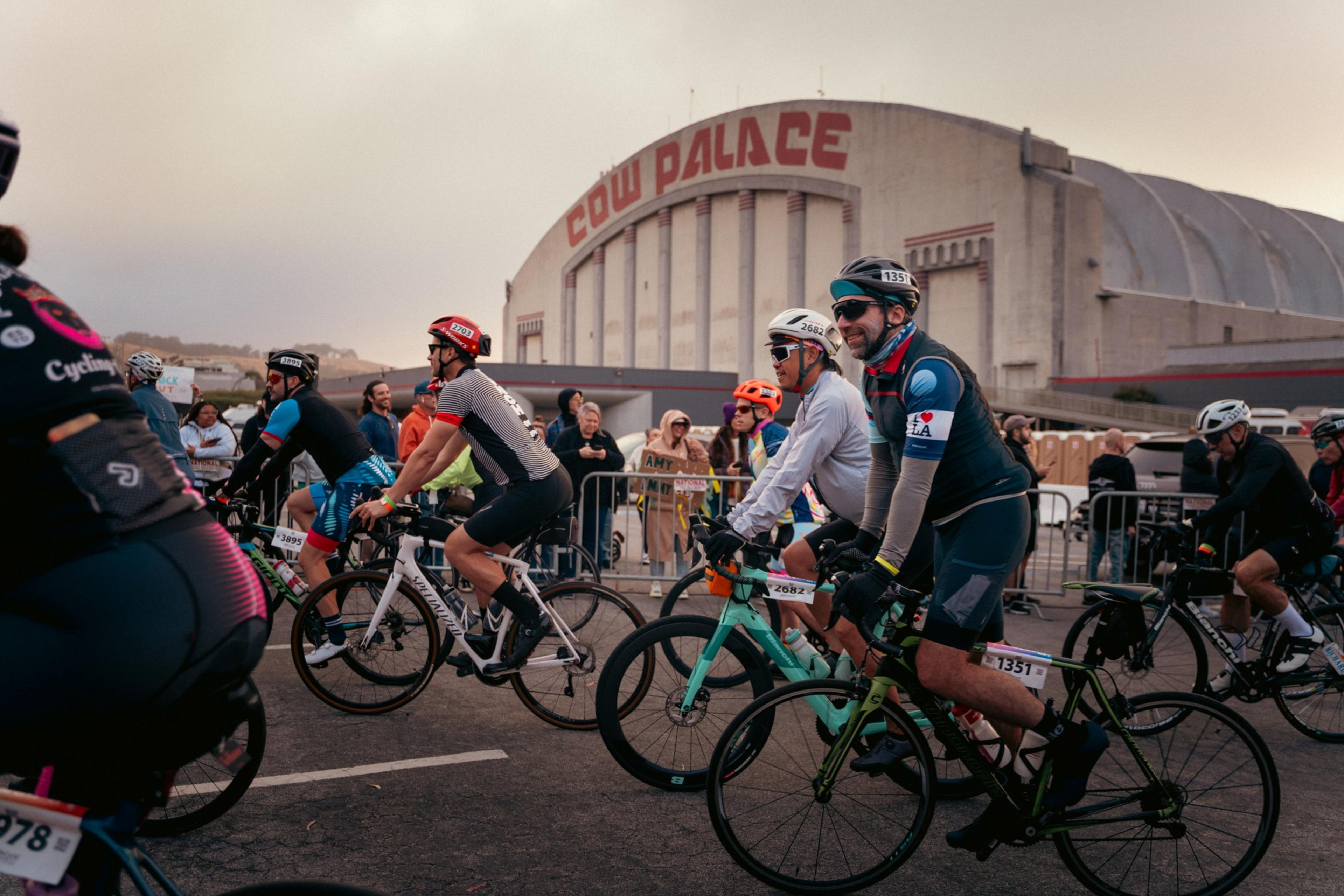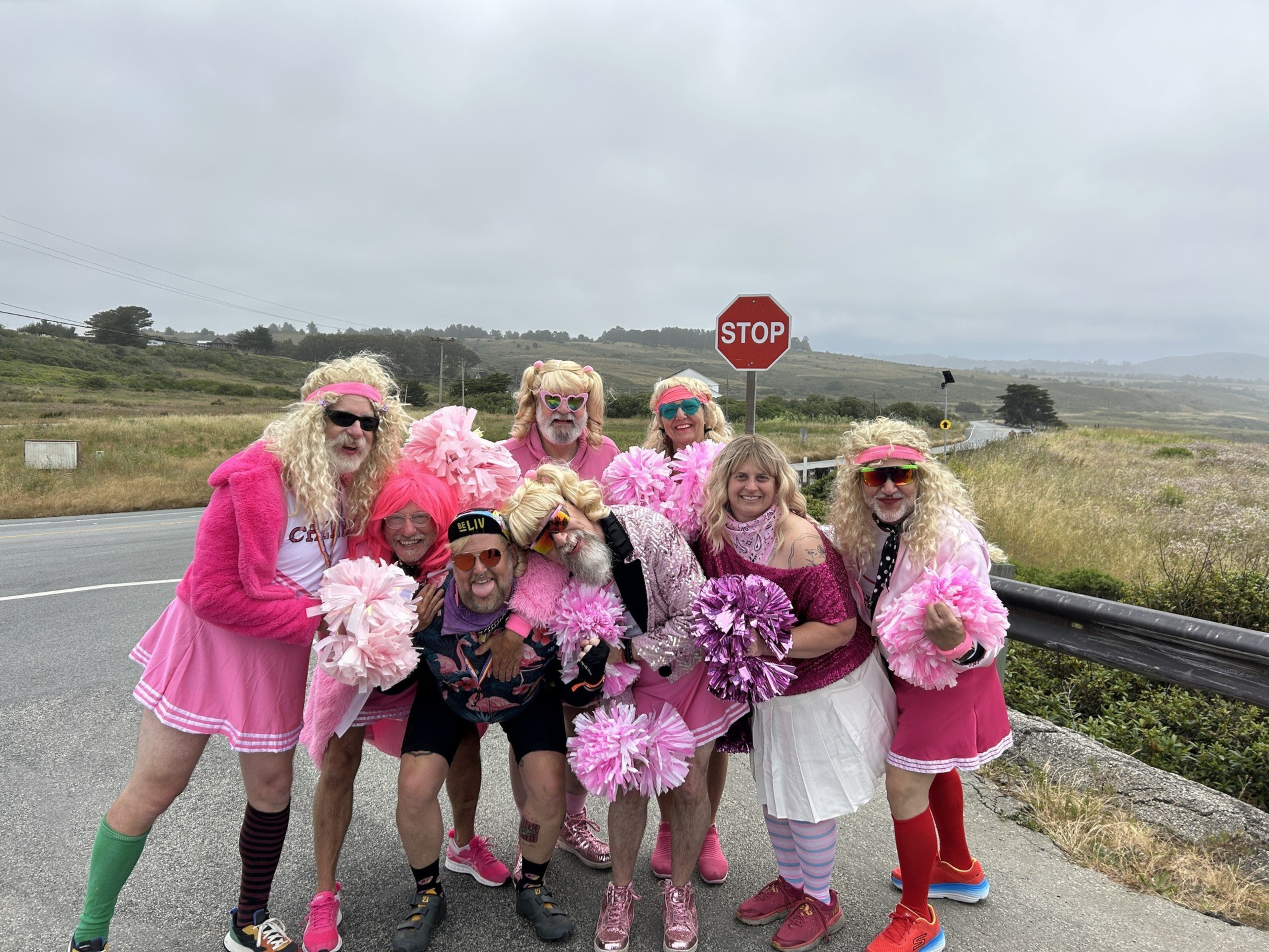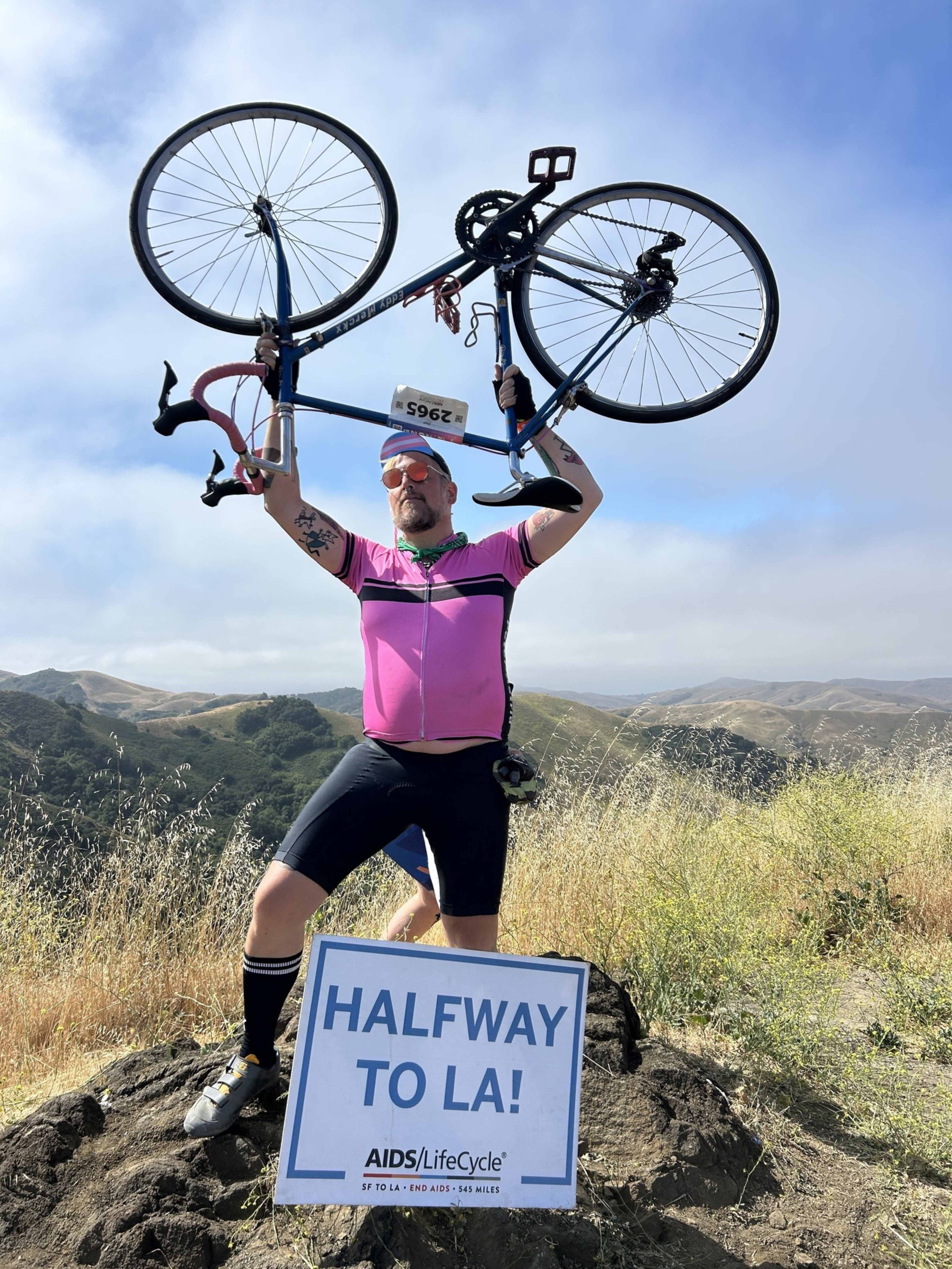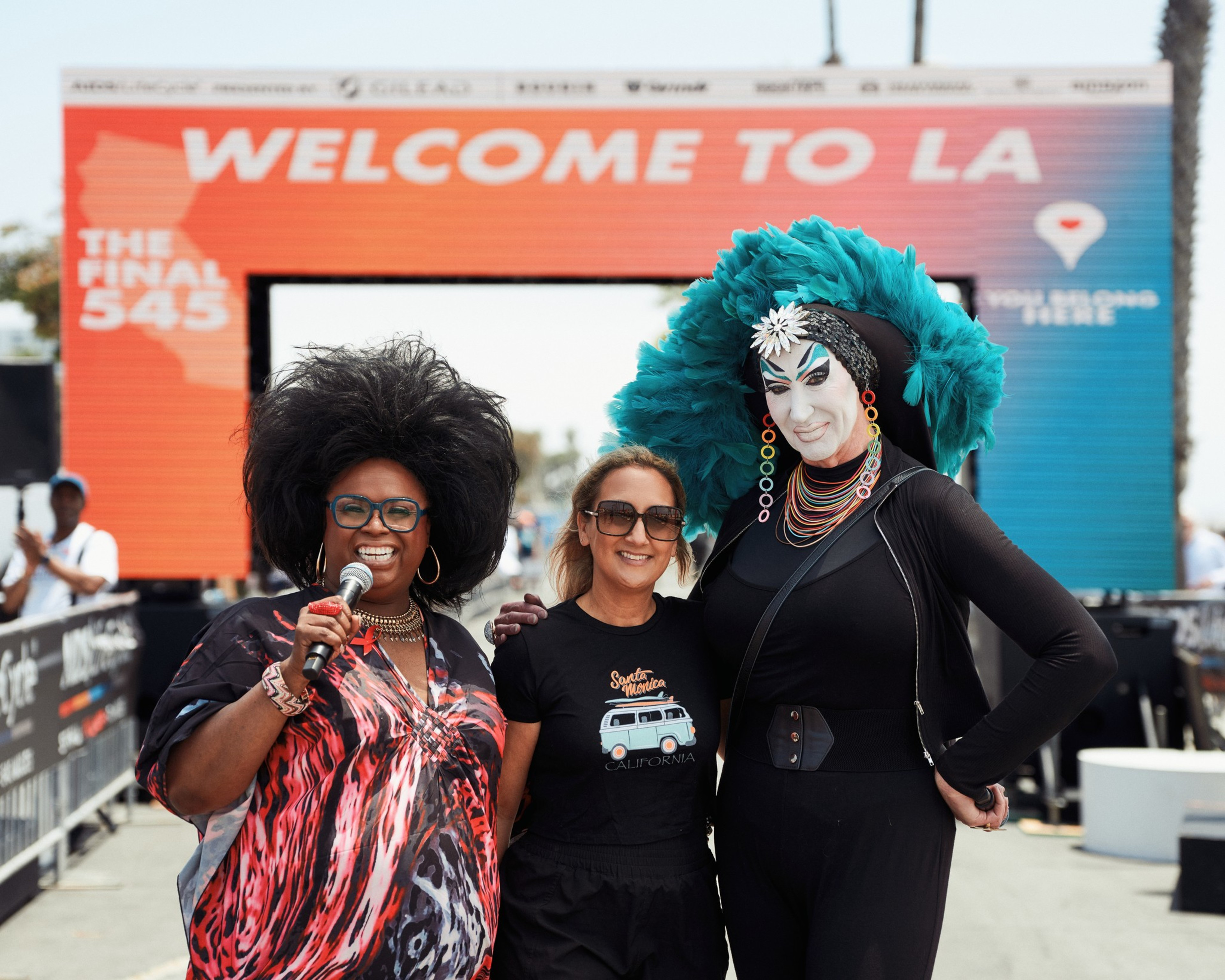I was biking in a red dress near Vandenberg Space Force Base when word got out that I and 2,500 other cyclists were being rerouted to avoid a surprise vehicle inspection that could have stopped us for hours. It was Day 5 of the annual AIDS/LifeCycle (opens in new tab), a 545-mile, seven-day ride down the coast from SF to L.A. that raises funds for the San Francisco AIDS Foundation and the Los Angeles LGBT Center.
I wanted to cry, even though tears wouldn’t go with my dress, a hooded, babushka-looking number I picked up for $6 at Out of the Closet. My spirits were already flagging because Day 5, from Santa Maria to Lompoc, was supposed to be easy — only 46 miles! — but it had become surprisingly grueling. And now we were tacking on several hundred feet of climbing through the hills of Santa Barbara County.
There was no backing out. We’d signed up for this challenge. And this year’s ride held a special importance, because it would be the last.

Since it began in 1994, the AIDS/LifeCycle has been a linchpin of Pride Month in the Bay Area, on par with the film festival Frameline or the installation of the pink triangle atop Twin Peaks. But after a steep dropoff in ridership and fundraising in 2024, organizers announced in September that the event would not continue after this year.
This was my first ride. To participate, riders must raise a minimum of $3,500. I set a goal of $4,400, and I’m proud to say I exceeded it by almost $1,000. At the opening ceremony June 1 at the Cow Palace, the organizers revealed that this last hurrah had yielded an impressive $17.4 million — a big jump from last year’s $10.9 million haul.

Fundraising makes riders eligible, but serious training is what gets most people to L.A. Most participants join teams, and huge groups of ALC weekend warriors can be seen all winter and spring ascending Twin Peaks and Hawk Hill in the Marin Headlands, or looping through the East Bay on daylong odysseys.
It was the most athletic undertaking I’d ever attempted. Day 1 (to Santa Cruz) involved 4,615 feet of climbing. Day 2 (to the Monterey County community of King City) carried us 110 miles. Since I made road biking my entire personality during Covid, I’ve pedaled more than 20 “centuries” — rides of 100 miles or more. But I’ve never gone that distance, then set the alarm for 4:30 a.m. to hop back in the saddle the next day for another 66 miles. Day after day, I deepened my lifelong romance with masochism only to cheat on it with ibuprofen. Please don’t ask about my tush.
All 2,500 riders’ basic needs were met by the 700 volunteer roadies who cook every meal, schlep all the luggage, and perform the titanic invisible labor that keeps the whole thing running. In spite of having consumed 6,000 calories a day, my food-writer belly is smaller, and my quads are swole.

Random people cheered us on up and down the state, and my colleague David Sjostedt and his girlfriend magically intercepted me for a quick hug as they were driving on 101. I ran into old friends and made new ones. According to the fitness app Strava, I was positively hurtling down the coast. It turns out that if, every 10 or 15 miles, someone in costume is smiling and handing you orange slices and thanking you for riding, you can do pretty much anything.
By the afternoon of Day 1, I was falling hard for the “Love Bubble,” as ALC veterans refer to the traveling carnival of sweaty encouragement and shameless flirting. The whole week was essentially one long tattoo mutual-appreciation society, since nobody loves ink like queer cyclists do.
Even out on the road, I’m congenitally incapable of unplugging, so I got periodic notifications that the world is still awful. As I rode through the vineyards of Paso Robles or made a quick detour around Pismo Beach, news alerts informed me that “King of the Hill” voice actor Jonathan Joss had been shot dead in a possible homophobic hate crime (opens in new tab) and the federal government was gutting HIV research (opens in new tab) and renaming the USS Harvey Milk (opens in new tab). It was all the reminder I needed that the fight never ends, and, as a group of drag queens shouted, “Pedal harder, bitches!” near Pigeon Point Lighthouse, I soldiered on.

I’m a chubby, 44-year-old nonbinary trans person with almost no testosterone. But the greatest gift that coming to terms with my identity has given me is a sense of embodiment, and I held my own among thousands of fit riders. On Day 7, I pulled into a crowd of hundreds of cheering people at Santa Monica Pier having pedaled without incident for 41 hours, over 561 miles and 23,000 vertical feet — a status known on the ride as “every fucking inch.” Sobbing, I bowed my head before one final roadie as she slipped a finishing medal around my neck. It’s heavy, and I wore it for three days.
The AIDS/LifeCycle is over. But the beneficiary organizations announced this week that they will produce two smaller, three-day rides (opens in new tab) in 2026. I hope to do the Northern California one, but no matter what, there will always be a time I biked all the way from here to Los Angeles, and never felt so free.
